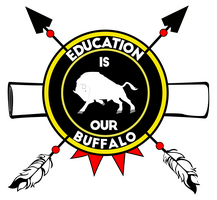The Lakota and the Shahiyela - the Sioux and the Cheyenne - have been good friends for a long time. Often they have fought shoulder to shoulder. They fought the white soldiers on the Bozeman Road, which we Indians called the Thieves' Road because it was built to steal our land. They fought together on the Rosebud River, and the two tribes united to defeat Custer in the big battle of the Little Bighorn. Even now in a barroom brawl, a Sioux will always come to the aid of a Cheyenne and vice versa. We Sioux will never forget what brave fighters the Cheyenne used to be.
Over a hundred years ago the Cheyenne had a famous war chief whom the whites called Roman Nose. He had the fierce, proud face of a hawk, and his deeds were legendary. He always rode into battle with a long war-bonnet trailing behind him. It was thick with eagle feathers, and each stood for a brave deed, a coup counted on the enemy.Roman Nose had a powerful war medicine, a magic stone he carried tied to his hair on the back of his head. Before a fight he sprinkled his war shirt with sacred gopher dust and painted his horse with hailstone patterns. All these things, especially the magic stone, made him bullet proof. Of course he could be slain by a lance, a knife, or a tomahawk, but not with a gun. And nobody ever got the better of Roman Nose in hand-to-hand combat.
There was one thing about Roman Nose's medicine: he was not allowed to touch anything made of metal when eating. He had to use horn or wooden spoons and eat from wooden or earthenware bowls. His meat had to be cooked in a buffalo's pouch or in a clay pot, not in a white man's iron kettle.
One day Roman Nose received word of a battle going on between white soldiers and Cheyenne warriors. The fight had been swaying back and forth for over a day. "Come and help us; we need you" was the message. Roman Nose called his warriors together. They had a hasty meal, and Roman Nose forgot about the laws of his medicine. Using a metal spoon and a white man's steel knife, he ate buffalo meat cooked in an iron kettle.
The white soldiers had made a fort on a sand spit island in the middle of a river. They were shooting from behind and they had a new type of rifle which was better and could shoot faster and further than the Indians' arrows and old muzzle-loaders.
The Cheyenne were hurling themselves against the soldiers in attack after attack, but the water in some spots came up to the saddles of their horses and the river bottom was slippery. They could not ride up quickly on the enemy, and they faced murderous fire. Their attacks were repulsed, their losses heavy.
Roman Nose prepared for the fight by putting on his finest clothes, war shirt, and leggings. He painted his best horse, with hailstone designs, and he tied the pebble which made him bulletproof into his hair at the back of his head.
But an old warrior stepped up to him and said: "You have eaten from a iron kettle with a metal spoon and a steel knife. Your medicine is powerless; you must not fight today. Purify yourself for four days so that your medicine will be good again."
"But the fight is today, not in four days," said Roman Nose. "I must lead my warriors. I will die, but only the mountains and the rocks are forever." He put on his great war-bonnet, sang his death song, and then charged. As he rode up to the whites' cottonwood breastwork, a bullet hit him in the chest. He fell from his horse; his body was immediately lifted by is warriors, and the Cheyenne retreated with their dead chief. To honor him in death, to give him a fitting burial, was more important than to continue the battle. All night the soldiers in their fort could hear the Cheyenne's mourning songs, the keening of the women. They too knew that the great chief Roman Nose was dead. He had died as he had lived. He had shown that sometimes it is more important to act like a chief than to live to a great old age.
Go Back To: Lakota Sioux Nation
